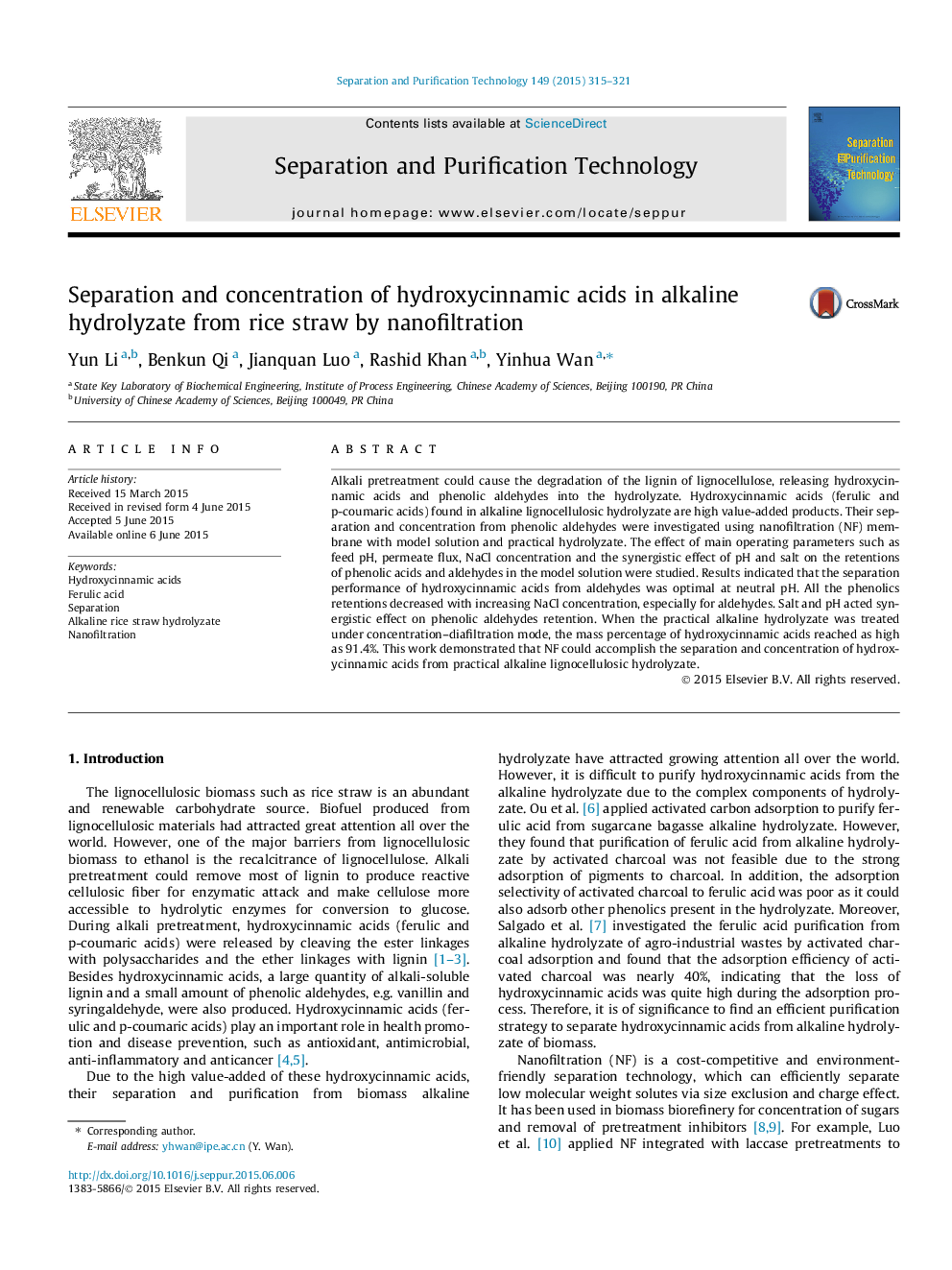| Article ID | Journal | Published Year | Pages | File Type |
|---|---|---|---|---|
| 640594 | Separation and Purification Technology | 2015 | 7 Pages |
•Hydroxycinnamic acids are separated from alkaline lignocellulosic hydrolyzate by NF.•Separation efficiency of hydroxycinnamic acids to aldehydes is optimal at neutral pH.•Higher NaCl concentration results in lower retentions of phenolics.•Concentration–diafiltration mode greatly improves the purity of hydroxycinnamic acids.•Mass percentage of hydroxycinnamic acids can reach 91.4% by NF.
Alkali pretreatment could cause the degradation of the lignin of lignocellulose, releasing hydroxycinnamic acids and phenolic aldehydes into the hydrolyzate. Hydroxycinnamic acids (ferulic and p-coumaric acids) found in alkaline lignocellulosic hydrolyzate are high value-added products. Their separation and concentration from phenolic aldehydes were investigated using nanofiltration (NF) membrane with model solution and practical hydrolyzate. The effect of main operating parameters such as feed pH, permeate flux, NaCl concentration and the synergistic effect of pH and salt on the retentions of phenolic acids and aldehydes in the model solution were studied. Results indicated that the separation performance of hydroxycinnamic acids from aldehydes was optimal at neutral pH. All the phenolics retentions decreased with increasing NaCl concentration, especially for aldehydes. Salt and pH acted synergistic effect on phenolic aldehydes retention. When the practical alkaline hydrolyzate was treated under concentration–diafiltration mode, the mass percentage of hydroxycinnamic acids reached as high as 91.4%. This work demonstrated that NF could accomplish the separation and concentration of hydroxycinnamic acids from practical alkaline lignocellulosic hydrolyzate.
Graphical abstractFigure optionsDownload full-size imageDownload as PowerPoint slide
